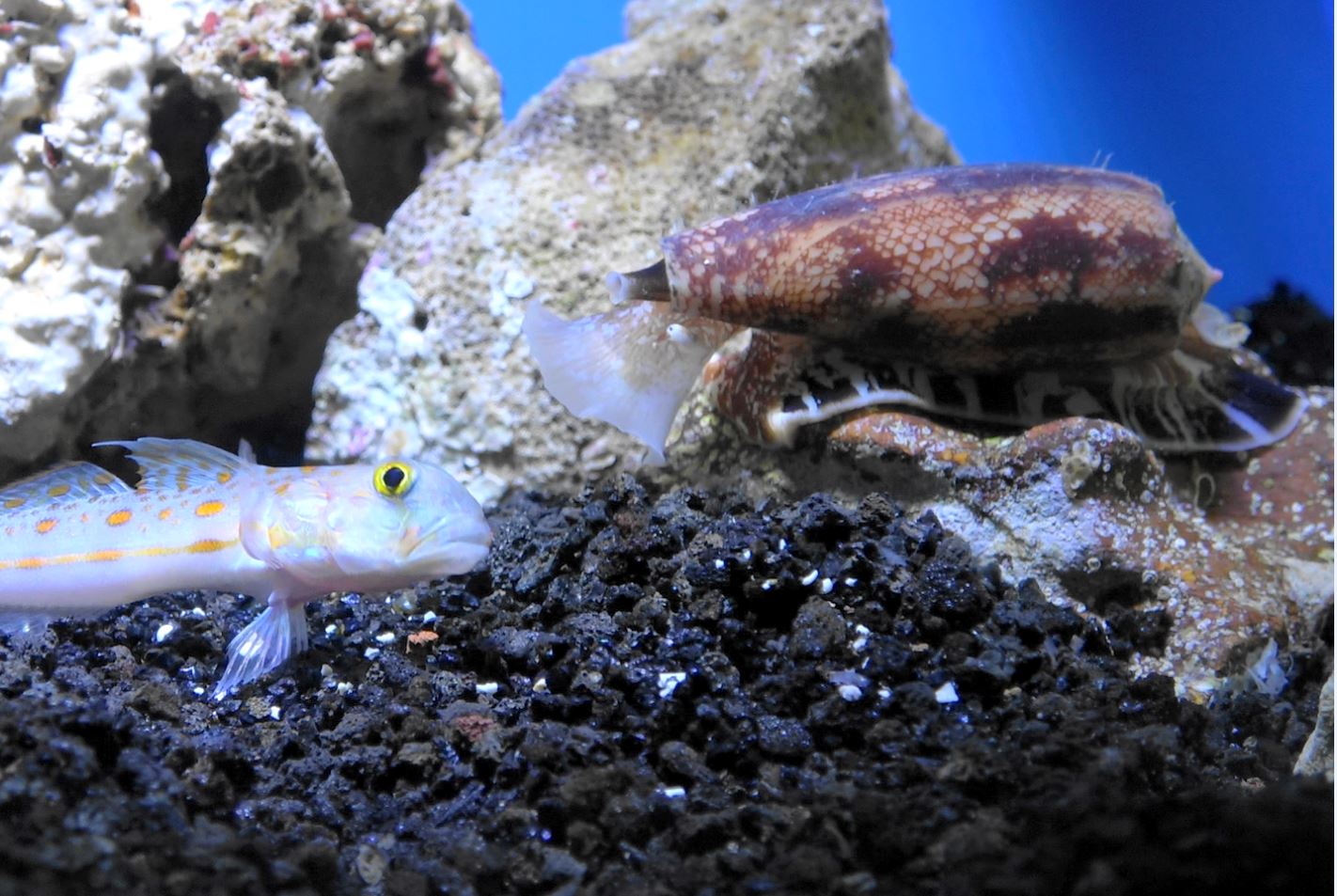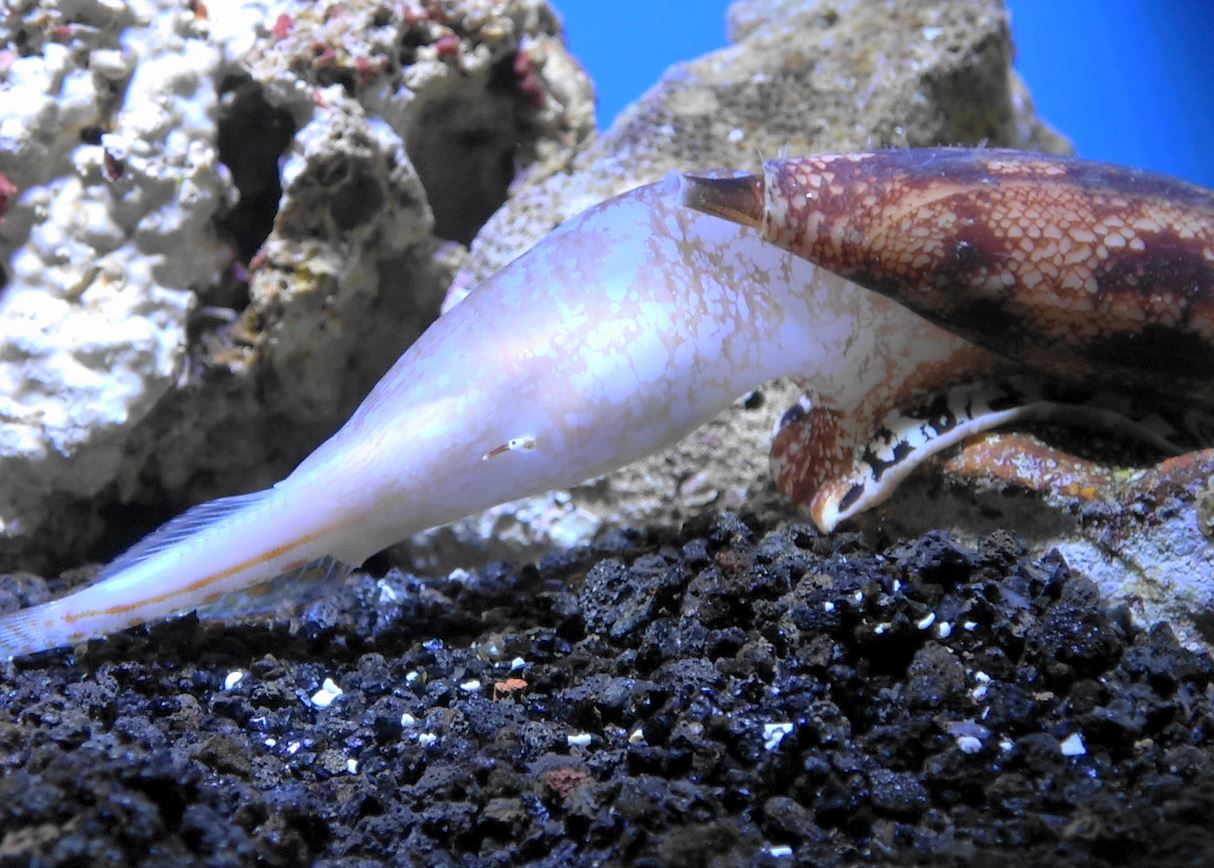
Fish-hunting marine cone snails have developed a strategy to hit and subdue their prey with up to 200 different compounds, one of which is insulin.
American and Australian researchers have examined the function of seven insulin sequences found in the venom from three species of cone snail and found each species produces insulin with slightly different structures.
This new study provides the research team with three different ‘templates’ to produce more effective insulin treatments for diabetics in humans.
They look gory, freaky and cool when attacking but marine snail venom could improve insulin for diabetic patients, says University of Utah Health lead author, assistant professor Helena Safavi-Hemami PhD, whose team conducted extensive testing on three cone snail varieties Conus geographus, C. tulipa and C. kinoshitai.
“While each species produces insulin with slightly different structures, each insulin is fast-acting because it lacks the sticky part of the B chain found in human insulin,” she says.
Insulin, a hormone produced by the pancreas to regulate blood sugar, consists of two segments called A and B chains.
The B cluster forms dimers and hexamers that allow the pancreas to store the hormone for later use. This segment is also necessary to activate the insulin receptors that signal the body to take up sugar from the blood. Insulin must undergo several conversions to decluster before it can lower blood sugar.
A person with type 1 diabetes is unable to produce insulin and requires daily injections to manage their blood sugar.
Despite decades of research, the manufactured insulin continues to contain the B chain in order to activate the receptor to lower blood sugar, delaying the drug’s effect by 30-90 minutes.
“Evolution may be the driving force to increase the molecular diversity of the toxin molecules that the cone snail species use for hunting prey,” says co-author Danny Hung-Chieh Chou, PhD., assistant professor of Biochemistry at University of Utah Health.
The team, including co-investigators at Flinders University and La Trobe University, tested how each of the insulin sequences lowered blood sugar in zebrafish and mice. The model animals were treated with streptozotocin to induce symptoms of type 1 diabetes before the animals were dosed with the different synthesised insulins.

The lead researchers found three of the venom-generated insulin sequences (Con-Ins T1A from C. tulipa, Con-Ins G1 from C. geographus and Con-Ins K1 from C. kinoshitai) lowered blood sugar effectively.
Using cell lines, they found the cone snail insulin sequences were able to bind to and activate the human insulin receptor, despite missing the part of the B chain found in human insulin. These sequences, however, are 10 to 20 times less potent than human insulin.
Researchers say the unique configuration provides the research team with a slightly different template to consider when designing new drugs that act quickly and effectively.
“We are beginning to uncover the secrets of cone snails,” says Professor Briony Forbes, from Flinders University, who also is co-investigating the active peptides synthesised from venom used by the Australian platypus and echidna in the hope of copying the secrets of nature.
“In these venoms we are looking at agents/peptides that can alter blood glucose or metabolism,” Professor Forbes says.
“In cone snails we’re focusing on insulin while in platypus and echidna there is a glucagon-like peptide 1 of great interest.
“We hope to use what we learn from marine cone snails to find new approaches to treat diabetes.
“For our part, my lab is focusing on how these cone snail insulins can bind to the human insulin receptor thereby indicating their potential as scaffolds to build rapid-acting human insulins,” says Professor Forbes, Head of Medical Biochemistry at the College of Medicine and Public Health at Flinders University.
Although moderately mobile, marine cone snails have perfected several strategies to capture prey. Some fish-hunting species release venom into the surrounding water.
Within the plume of toxic venom, the fish succumbs to fast-acting insulin that renders it immobile. As the fish flounders, the snail emerges from its shell to swallow the pacified victim whole.
The new paper, Fish-hunting cone snail venoms are a rich source of minimized ligands of the vertebrate insulin receptor (2019) by Peter Ahorukomeye, Maria M. Disotuar, Joanna Gajewiak, Santhosh Karanth, Maren Watkins, Samuel D. Robinson, Paula Flórez Salcedo, Nicholas A. Smith, Brian J. Smith, Amnon Schlegel, Briony E. Forbes, Baldomero M. Olivera, Danny Hung-Chieh Chou and Helena Safavi-Hemami is an open access publication.
The US research was supported by Margolis Foundation, the Juvenile Diabetes Research Foundation, the National Institutes of Health, and the Utah Science and Technology Initiative. Information and video courtesy University of Utah Health.

